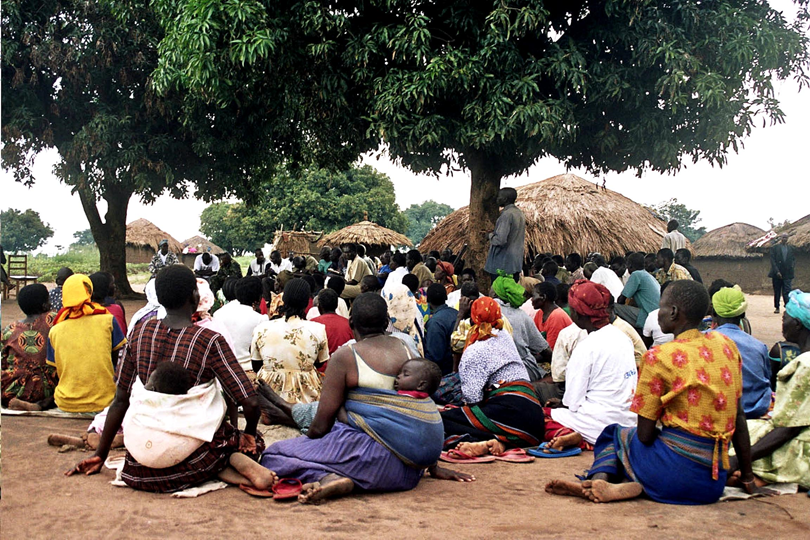Welcome to the blog for the month of December!
As we close out the year, I'm drawn to reviewing my work over the past few months and I have been stuck on one of the projects I supported to set up data collection methods in Northern Nigeria. In this blog post, we will explore various techniques and strategies for collecting data during monitoring visits, focusing on a health intervention aimed at improving breastfeeding practices among women residing in rural communities in Bauchi State, Nigeria.
For this project, the team had very limited M&E skills even though they were quite adept at community engagement and public health Education. The terms of their agreement with their funders was to ensure they had credible information on several indictors. The key ones I'd focus on are to measure:
- the number of women enrolled on the project either through ante natal classes offered at community health centres, births at health centres, faith centres or within the community (at home or at the residence of a traditional birth attendant)
- Effect of the public health education provided by the team on mothers' breast feeding practices.
- The previous infant feeding pattern of project beneficiaries especially number of women that had previously feed their babies with breast milk for 6 months and the project's support for conversion to at least 6months of infant breastfeeding
- Mothers perception on the value of breastfeeding
- Health implications of breastfeeding on infants
I was brought in to develop a monitoring system and improve the capacity of the team to capture their quarterly reporting requirements. I then used the data collected to write their quarterly reports. I set out to use a mix of data collection methods and approaches and thought about the specific tools I'd need to get the information that would demonstrate accountability and value for money. I opted for mixed data collection.
Here's what I pitched to the team:
- Quantitative Data Collection Methods:
- Surveys and Questionnaires: We would develop structured questionnaires to gather quantitative data on breastfeeding practices, such as breastfeeding initiation, duration, exclusive breastfeeding, and complementary feeding. The projects' field officers would administer these surveys during face-to-face interviews with the women in the target communities. This was approved and I ensured clear instructions and standardised questions to maintain consistency in data collection.
- Observations: Conduct direct observations of breastfeeding practices, focusing on observing initiation, positioning, and duration in real-time. Use observation checklists to record details and ensure accurate and objective data collection. I proposed that this be done in the homes of the women enrolled on the project to be sure that they were in their natural environment. While my data collection method was approved, my approach of observation at home was not, and healthcare workers were the preferred choice for conducting these observations to respect the culture of the enrolees as some of the field staff were male and would not be granted easy access to the homes of women.
- Health Facility Records: Collect quantitative data from health facility records, such as antenatal and postnatal files, to capture information on prenatal education, counselling sessions, and follow-up visits. This data collection method was approved and helped us understand the link between healthcare services and breastfeeding practices.
- Qualitative Data Collection Methods:
- Focus Group Discussions (FGDs): I proposed that we organise FGDs with groups of women in the intervention communities to gain deeper insights into factors influencing breastfeeding practices, community norms, and perceived barriers to breastfeeding. Engage them in open-ended discussions to encourage participants to share their experiences and opinions. Record discussions using audio or video devices for later analysis. This was approved. Due to the special skills required for these sessions, I conducted the sessions myself.
- In-depth Interviews (IDIs): I proposed that we conduct one-on-one interviews with key stakeholders, such as healthcare providers, community leaders, and programme facilitators, to gather their perspectives on the intervention's impact and challenges. Probe deeper into issues related to policy, infrastructure, and community support. This was also approved, I designed the tools and facilitated the sessions.
- Case Studies and Personal Narratives: I received approval to collect individual stories and personal narratives from selected beneficiaries to highlight their personal journeys and the impact of the intervention on their breastfeeding practices. These narratives provided valuable qualitative data that was used to contextualize the quantitative findings. I received approval from the project lead to carry on with this method and enlisted the help of the health workers and field team to identify women that could be used as case studies.
I'd say that the Best Practices we used for Data Collection are:
a) Training and Standardisation: We ensured that data collectors received comprehensive training on the data collection tools, techniques, and ethical considerations. I standardised data collection procedures, including language use, to maintain consistency.
b) Piloting and Refinement: Prior to full implementation, we piloted the data collection methods and tools in a representative sample to identify any issues, missing questions, or language barriers. We then revised and refined the tools with the feedback received to address the gaps we noticed.
c) Triangulation: We combined quantitative and qualitative data to provide a comprehensive understanding of the intervention's progress. I worked with the team to identify patterns and trends by comparing findings from different data collection methods.
d) Ethical Considerations: With consent form, we obtained informed consent from participants before conducting any data collection activities. To ensure confidentiality, we did not share findings without anonymising the data. a we respected cultural norms, and prioritised the well-being of the participants throughout the process.
e) Data Quality Assurance: The project manager and I regularly monitored and evaluated data collection activities to ensure accuracy, completeness, and consistency. I used data quality control measures, including spot-checking, validation, and verification.
The data collection process was hectic but fun!
In monitoring and evaluation, the use of mixed data collection methods is essential to gaining a comprehensive understanding of the progress and impact of interventions. Through the case study of this health intervention aimed at improving breastfeeding practices in rural communities in Bauchi State, Nigeria, we have explored a range of both quantitative and qualitative methods and how these methods were adapted to suit the local setting.
By contextualising our utilisation of surveys, observations, focus group discussions, interviews, and narratives, we were able to gather rich and diverse data during quarterly monitoring visits. It was also vital that we maintain ethical considerations, standardise data collection procedures, and apply best practices to ensure high data quality.
Remember, data collection is not merely about numbers and statistics but also about capturing the stories and experiences of individuals. By using a variety of data collection techniques, we have been able to paint a holistic picture and drive meaningful change in breastfeeding practices and beyond. I hope the report I submitted at the end of each quarter was valuable to the team and that they used it to demonstrate the value they brought to the larger programme. I also hope they used our learning sessions, at which I highlighted what was going well and how the team could improve, to get better at project delivery. I'm done with the project now and an evaluation would be rolled out in few months. I wish the team the very best and hope they keep being impactful!
That's all from me until next time!
Enjoy your holidays!
©Tracy Lar



